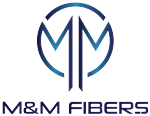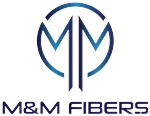Thus instead of determining the costs of a product, Kohler determined the costs of an activity. On the left side of this account Staubus recorded the costs of the inputs of the activity. These inputs are the outputs from previous activities within the company and / or outputs from another entity (for instance an outside supplier). On the right hand side of the account Staubus recorded the value of the output of the activity.
Requirements for Activity-Based Costing (ABC)
If however the output is sold to a customer, the about form w output is measured at the net realizable value (selling price minus selling costs). Staubus activity accounting culminates in a comparison of outputs, at standard cost or net realizable value, and inputs (Staubus, 1971). Activity-based costing (ABC) enhances the costing process in three ways. First, it expands the number of cost pools that can be used to assemble overhead costs. Instead of accumulating all costs in one company-wide pool, it pools costs by activity.
History of Batch-Level Activities
Interwood’s total budgeted manufacturing overheads cost for the current year is $5,404,639 and budgeted total labor hours are 20,000. Alex has been applying traditional costing method during the whole 10 years period and based the pre-determined overhead rate on total labor hours. Second, it creates new bases for assigning overhead costs to items, so costs are allocated based on the activities that generate costs, instead of on volume measures—such as machine hours or direct labor costs. The concept of activity-based costing and, as a consequence, batch-level activity accounting, started in the 1930s. The TVA was in the process of accounting for costs surrounding activities involved with flood control, navigation, and hydro-electric power generation.
Part B: Calculating Total Cost under Activity-Based Costing
The cost driver rate is used in activity-based costing to calculate the amount of overhead and indirect costs related to a particular activity. In the traditional costing system, cost equals materials cost plus labor cost plus manufacturing overhead costs charged at the pre-determined overhead rate. You believe that the benefits of activity-based costing system exceeds its costs, so you sat down with Aaron Mason, the chief engineer, to identify the activities which the firm undertakes in its sofa division. Next, you calculated the total cost that goes into each activity, identified the cost driver that is most relevant to each activity and calculated the activity rate.
- Activity-based costing is used to get a better grasp on costs, allowing companies to form a more appropriate pricing strategy.
- As with the traditional overhead allocation method, the actual overhead costs are accumulated in an account called manufacturing overhead and then applied to each of the products in this step.
- Activity-based costing (ABC) is a costing method that assigns overhead and indirect costs to related products and services.
- However, the service industry can apply the same principles to improve its cost management.
For example, companies will sometimes offer extreme sales, such as on Black Friday, to attract customers in the hope that the customers will purchase other products. This information shows how valuable ABC can be in many situations for providing a more accurate picture than traditional allocation. Figure 6.8 illustrates how the costs in each pool are allocated to each product in a different proportion. The second step is assigning overhead costs to the identified activities. In this step, overhead costs are assigned to each of the activities to become a cost pool.
Under the ABC system, an hedging definition activity can also be considered as any transaction or event that is a cost driver. A cost driver, also known as an activity driver, is used to refer to an allocation base. Examples of cost drivers include machine setups, maintenance requests, consumed power, purchase orders, quality inspections, or production orders. Certain activities, such as maintenance or quality control, can oftentimes be accounted for in multiple levels of activity-based costing.
Batch-level activities are related to costs that are incurred whenever a batch of a certain product is produced. However, these costs are accounted for regardless of the related production run’s size. Examples of these batch-level cost drivers can often include machine setups, maintenance, purchase orders, and quality tests.
The fourth step is to compute the predetermined overhead rate for each of the cost drivers. This portion of the process is similar to finding the traditional predetermined overhead rate, where the overhead rate is divided by direct labor dollars, direct labor hours, or machine hours. Each cost driver will have its own overhead rate, which is why ABC is a more accurate method of allocating overhead. Activity-based costing (ABC) is a costing method that assigns overhead and indirect costs to related products and services. This cost accounting method recognizes the relationship between costs, overhead activities, and manufactured products, assigning indirect costs to products less arbitrarily than traditional costing methods. However, some indirect costs—such as management and office staff salaries—are difficult to assign to a product.
It is because accurate allocation of cost is critical for identification of profitable products and allocating resources. The loss on each sale of the Solo product was not discovered until the company did the calculations for the ABC method, because the sales of the other products were strong enough for the company to retain a total gross profit. Calculate the total cost of the order and the invoice value of the order based on traditional costing system. Kohler defined an activity as a portion of work done by a specific part of the company. By tracking the costs of such activities in various parts of the company, Kohler began the precedent of accounting for the cost of work activities.
There were fewer machine hours than estimated, but there was also less overhead than estimated. There were more requisitions than estimated, and there was also more overhead. Now, since you have all the data needed, calculate the order cost using activity-based costing. While he has 50 skilled carpenters and 5 salespeople on his payroll, he has been taking care of the accounting by himself. Now, he intends to offer 40% of the ownership to public in next couple years and is willing to make changes and has hired you as the management accountant to organize and improve the accounting systems.
The other levels of activity that are accounted for by activity-based costing are unit-level activities, customer-level activities, production-level activities, and organization-sustaining activities. Activity Based Costing (“ABC”) is an approach to solve the problems of traditional cost management systems which are often unable to determine accurately the actual costs of production and of the costs of related services. Instead of using broad arbitrary percentages to allocate costs, ABC seeks to identify cause and effect relationships to objectively assign costs. Once costs of the activities have been identified, the cost of each activity is attributed to each product to the extent that the product uses the activity. In this way ABC often identifies areas of high overhead costs per unit and so directs attention to finding ways to reduce the costs or to charge more for costly products. Activity-based costing is a system that provides detailed information regarding a company’s production expenditures.
Activities involving a batch of products—as opposed to individual items. An example of a batch activity is the setting up of a machine to produce a batch of 1,000 identical items. Platinum Interiors recently placed an order for 150 units of the 6-set type. Since it is a customized order, Platinum will be billed at cost plus 25%.


